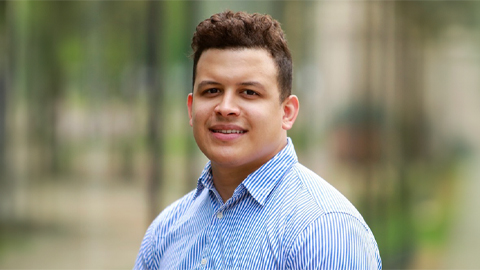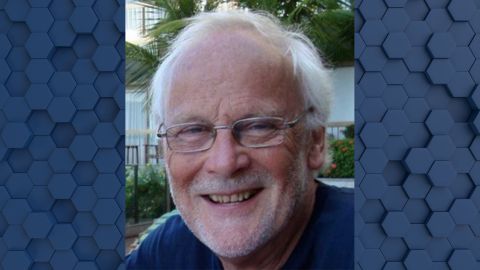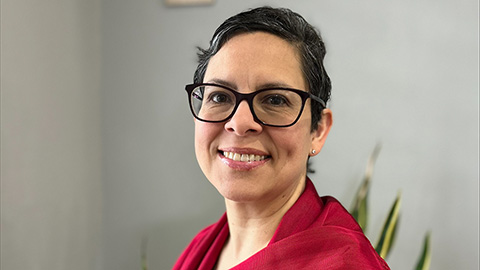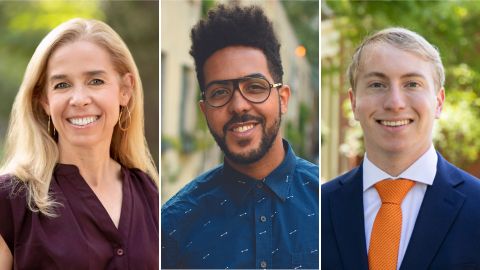AAAS announces 2021 fellows
The American Association for the Advancement of Science recently announced its class of 2021 fellows. AAAS fellows are members of an honorific group elected by the AAAS Council after a lengthy review process. The American Society for Biochemistry and Molecular Biology members among this year's honorees are Penny Beuning, Charles Burant, James Chambers, Brandt Eichman, Constance Jeffery, Hui-Kuan Lin, Aimin Liu, Eva Nogales, Melanie Ohi, Kim Orth, Kevin Raney, Rajinder Ranu, Stephen Safe, Tricia Serio, Scott Showalter, David Sibley, John Voorhees, Michael Weiss and Ann West.
Penny Beuning, a professor and chair of the department of chemistry and chemical biology at Northeastern University, was recognized for discoveries in the enzymology of DNA translesion synthesis, studying polymerases that can bypass damaged DNA, and for advancing toxicology research through studies of DNA adducts.
Charles Burant, a physician–scientist at the University of Michigan, was recognized for research combining genomic, transcriptomic, proteomic and metabolomic analysis of patient samples with behavioral and clinical studies to understand how insulin resistance, diabetes and obesity develop. He also directs a regional core facility for metabolomics studies and a clinic for weight loss studies.
James Chambers, a professor at the University of Texas San Antonio and a member of the South Texas Center for Emerging Infectious Diseases, was recognized for his teaching and training and for his contributions to understanding the biology of the pathogenic bacteria Francisella tularensis, which causes tularemia. His lab also has worked on developing biosensors to detect F. tularensis and other emerging pathogens.
Brandt Eichman, a professor at Vanderbilt University, was recognized for his work in structural cell biology, including research into how cells respond to and repair DNA damage, which has focused on DNA glycosylases that remove alkyl groups from DNA and on DNA translocases that help DNA replication machinery restart replication when it has been stalled by DNA damage

Constance Jeffery, an associate professor at the University of Illinois Chicago, was recognized for outstanding teaching and mentoring and for her research, which uses biophysical and bioinformatic techniques to understand so-called moonlighting proteins that carry out multiple, unrelated biochemical activities. For example, one human protein in a database she runs is an enzyme in the glycolysis pathway under some cellular conditions and at other times binds to RNA to regulate translation.
Hui-Kuan Lin, a professor at Wake Forest School of Medicine, was recognized for his contributions to understanding oncogenic signaling, especially the PI3K/Akt signaling pathway. His lab discovered that ubiquitination of Akt can be oncogenic, driving kinase activation, and has worked to develop small-molecule inhibitors that may have uses as cancer therapeutics.
Aimin Liu, a professor and distinguished chair in biochemistry at the University of Texas, San Antonio, was recognized for his contributions to structural and mechanistic enzymology. His lab studies amino acid metabolism, particularly tryptophan; metalloprotein cofactor biogenesis; and metalloprotein redox reactions.
Eva Nogales, a distinguished professor at the University of California Berkeley, a senior faculty scientist at the Lawrence Berkeley National Laboratory, a Howard Hughes Medical Institute investigator and a leader in the cryo-electron microscopy field, was recognized for her contributions to understanding the molecular function of numerous protein complexes, including microtubules and transcription initiation, polycomb and CRISPR complexes.

Melanie Ohi, a professor at the University of Michigan, was recognized for her use of structural biology techniques to understand the secretion systems that pathogenic bacteria use to puncture host cell membranes and translocate toxins into the host cell.
Kim Orth, a professor at the University of Texas Southwestern Medical Center, was recognized for her contributions to understanding how pathogenic bacteria hijack host cell signaling, ultimately offering insight into the regulation of eukaryotic signaling pathways.
Kevin Raney, a professor and chair of the department of biochemistry and molecular biology at the University of Arkansas for Medical Sciences, is recognized for studies of molecular motors on DNA and for contributions to understanding of how G-quadruplex DNA structures respond to oxidative stress.
Rajinder S. Ranu, a professor emeritus of molecular biology at Colorado State University, was recognized for his contributions to initiation of eukaryotic protein synthesis and identification of several initiation factors and for working to increase diversity in the student and faculty population at Colorado State University. He also isolated numerous genes involved in flower senescence from ornamental plants, such as roses, that might have useful biotechnology applications.

Stephen Safe, a professor at Texas A&M University, was recognized for his contributions to research that promotes safe use of chemicals in industry, and for his work on safer and more effective pharmaceuticals. His lab works on mechanism-based drug development for cancer, targeting nuclear receptors and other transcription factors.
Tricia Serio, a professor and dean of the college of natural sciences at the University of Massachusetts Amherst, was recognized for contributions to protein dynamics — her lab studies cellular responses to protein misfolding, including in prion disease — and to diversity, equity and inclusion in STEM.
Scott Showalter, a professor at Pennsylvania State University, was recognized for developing biophysical approaches to understand intrinsically disordered or partially disordered proteins involved in gene regulation and microRNAs. His lab has found ways to use nuclear magnetic resonance spectroscopy to shed light on the structures of these flexible molecules.
David Sibley, a senior investigator at the National Institute for Neurological Disorders and Stroke, was recognized for his contributions to neuropharmacology. His research focuses on the role of G protein-coupled dopamine receptors in neuronal signaling and works to elucidate their structures, effectors and modulators. His team has identified highly selective ligands and allosteric compounds that may eventually serve as drugs for neurological or psychiatric disorders.

John Voorhees, a distinguished professor at the University of Michigan Medical School, was recognized for his contributions in skin biology, including research on psoriasis, skin aging and responses to ultraviolet radiation. The AAAS also noted his “exemplary and sustained record of leadership in dermatology”; he has served as president of five dermatology societies and volunteered in various capacities for others.
Michael Weiss, a professor and chair of the department of biochemistry and molecular biology and precision health initiative chair in chemical biology at the Indiana University School of Medicine, was recognized for contributions to molecular endocrinology, studying how conformational changes in insulin affect its signaling and how transcription controls gonad development.
Ann West, a professor, research center director and associate vice president for research and partnerships at the University of Oklahoma, was recognized both for her research, which focuses on two-component signal transduction systems in bacteria and histidine–aspartate phosphorelays in yeast, and for her contributions to the development of structural biology in Oklahoma; since 2012 she has been the principal investigator of a center of biomedical research excellence in structural biology.

Enjoy reading ASBMB Today?
Become a member to receive the print edition monthly and the digital edition weekly.
Learn moreGet the latest from ASBMB Today
Enter your email address, and we’ll send you a weekly email with recent articles, interviews and more.
Latest in People
People highlights or most popular articles

MOSAIC scholar explores enzymes
Organic chemist Edwin Alfonzo's scientific journey took an unexpected turn when he discovered the world of enzymes.

Honors for Wright, Chiu and Flanegan
Awards, promotions milestones and more. Find out what's going on in the lives of ASBMB members.

In memoriam: Michael Waterfield
He was a British biochemist and a pioneer in the cancer research field who opened a proteomics lab at University College London.

Bakers and mentors help a MOSAIC scholar change her life
Joanna-Lynn Borgogna studies the vaginal microbiome, the metabolome and the development of gynecological disorders in reproductive-aged women.

Swapping stethoscope for pipette to understand diabetic retinopathy
MOSAIC scholar Emma M. Lessieur Contreras is inspired by the work of her ophthalmologist father.

Honors for Lemon, Silva and Brownlee
Awards, promotions, milestones and more. Find out what's going on in the lives of ASBMB members.

